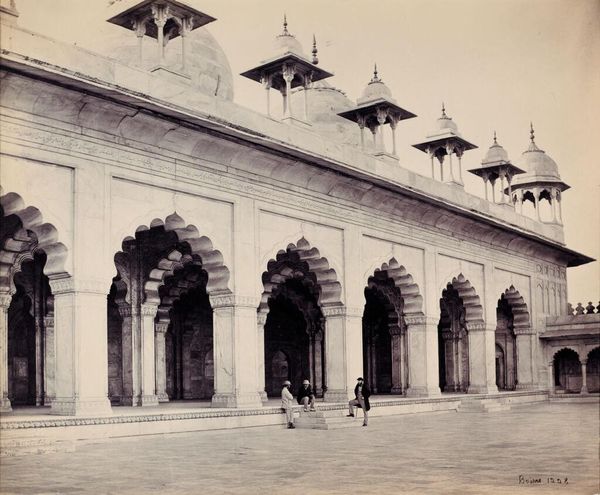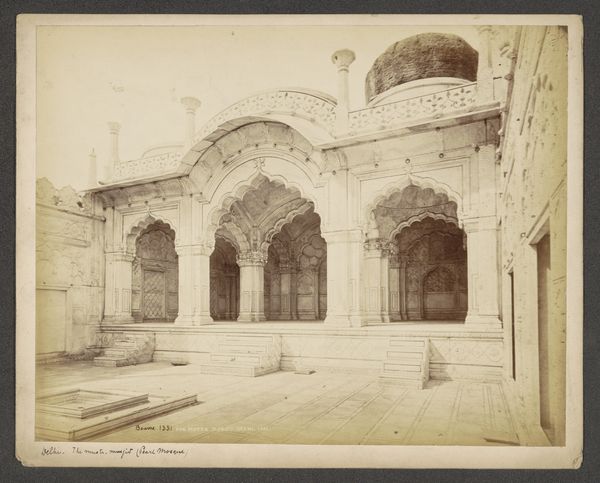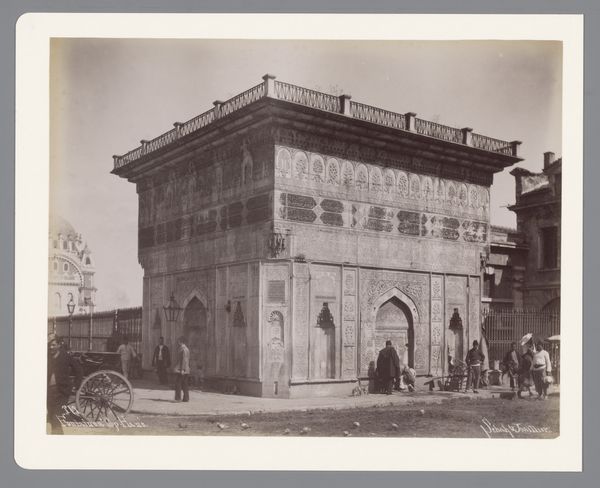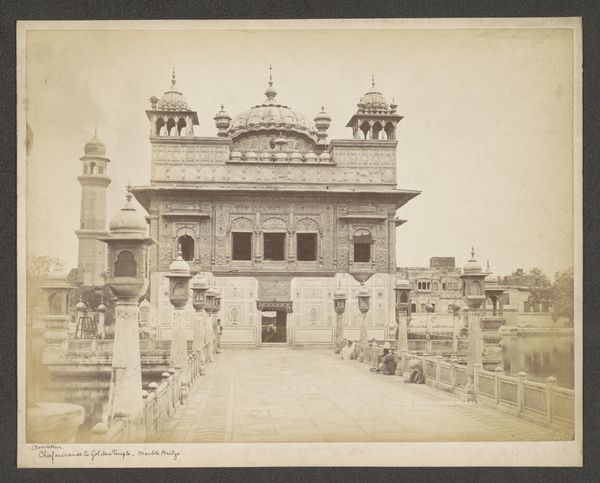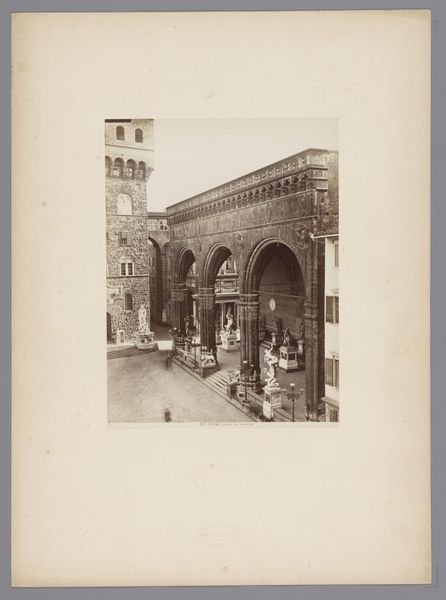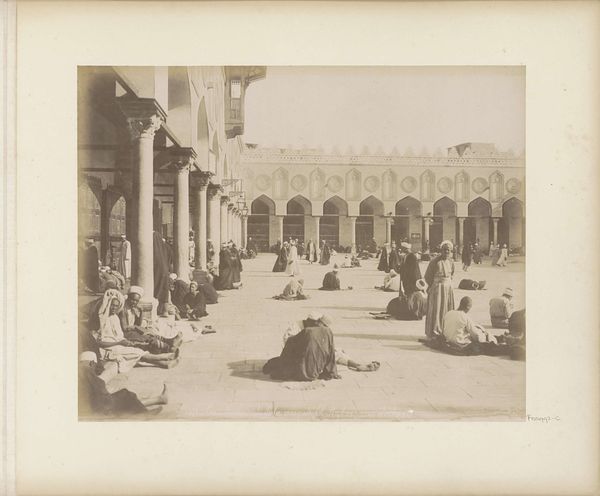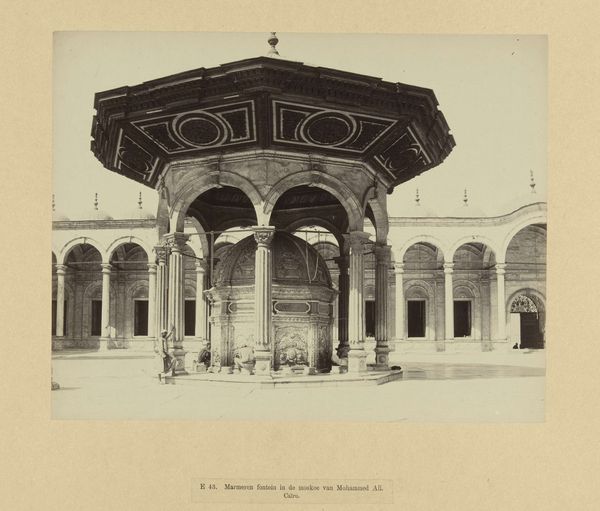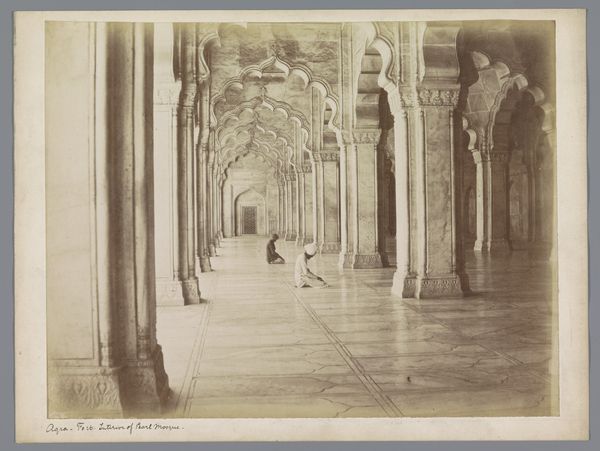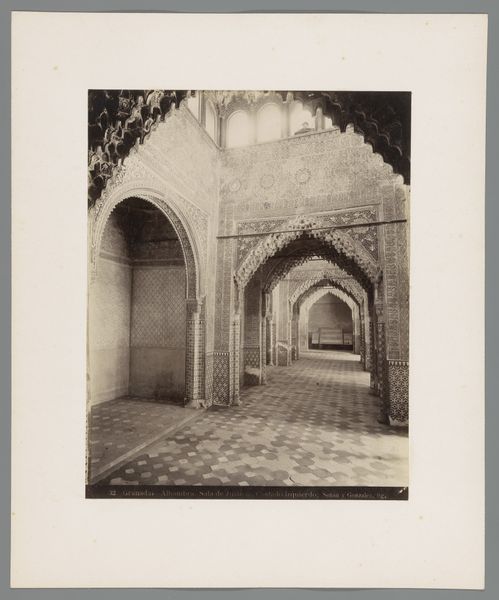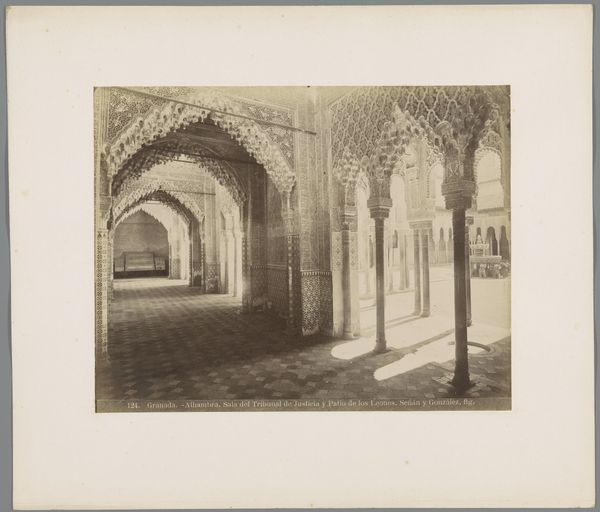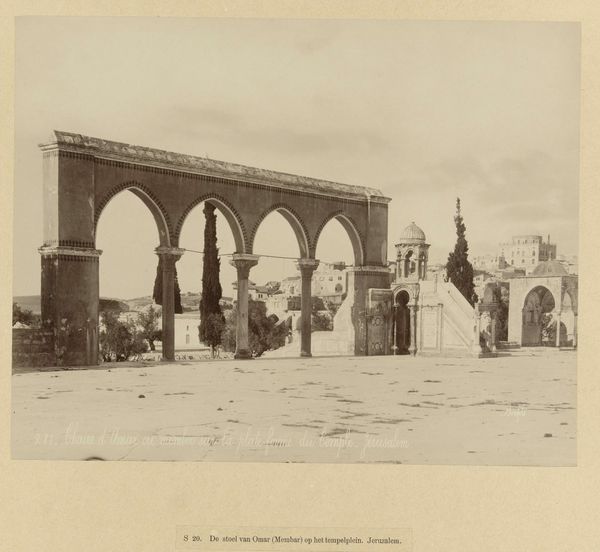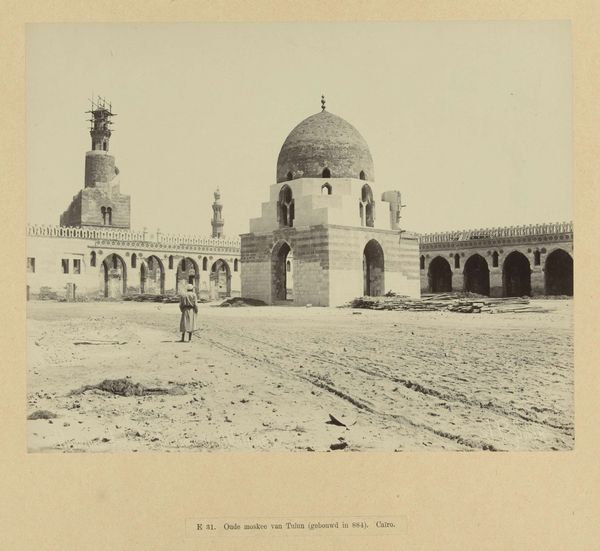
photography, site-specific, gelatin-silver-print
#
landscape
#
photography
#
orientalism
#
site-specific
#
gelatin-silver-print
#
19th century
#
cityscape
#
islamic-art
Dimensions: height 232 mm, width 292 mm, height 366 mm, width 416 mm
Copyright: Rijks Museum: Open Domain
Editor: Here we have Samuel Bourne's "Gezicht op de Moti Masjid in Agra," a gelatin silver print dating from around 1864 to 1866. It feels so still, so meticulously composed. How do you interpret this work? Curator: I see more than just a tranquil cityscape; I see a potent representation of power dynamics inherent in 19th-century Orientalist photography. Bourne, as a British photographer in India, inevitably framed his subjects through a colonial lens. Editor: So, the framing itself is a statement? Curator: Precisely. The photograph aestheticizes the Moti Masjid, rendering it a picturesque object for Western consumption. Consider how the figures within the scene are relegated to the background, seemingly dwarfed by the architecture. Whose narrative is being privileged here, and at whose expense? Editor: I hadn’t thought of it that way. It does seem to prioritize the building as an object over the people within it. Is there a sense of exoticism at play too? Curator: Absolutely. This image participates in a broader discourse of constructing the "Orient" as both alluring and inferior. The photograph isn’t just a neutral depiction; it reinforces colonial power structures. Can we look at Bourne's work critically, acknowledging its artistic value while simultaneously interrogating its ideological underpinnings? Editor: That's a really important point. It is beautiful, but we can't ignore the context in which it was made. I guess looking at art this way, as more than just something aesthetically pleasing, really makes you question everything about it. Curator: Precisely. This is how we can make art history relevant and use it as a springboard to talk about urgent sociopolitical issues of today.
Comments
No comments
Be the first to comment and join the conversation on the ultimate creative platform.
